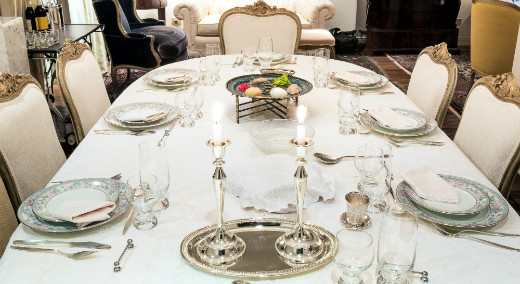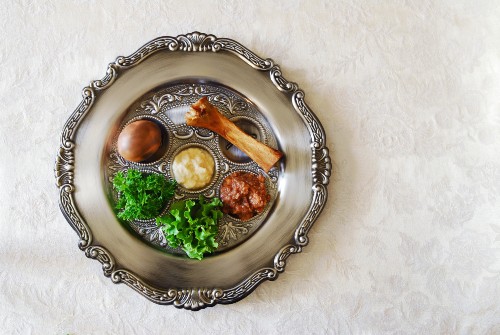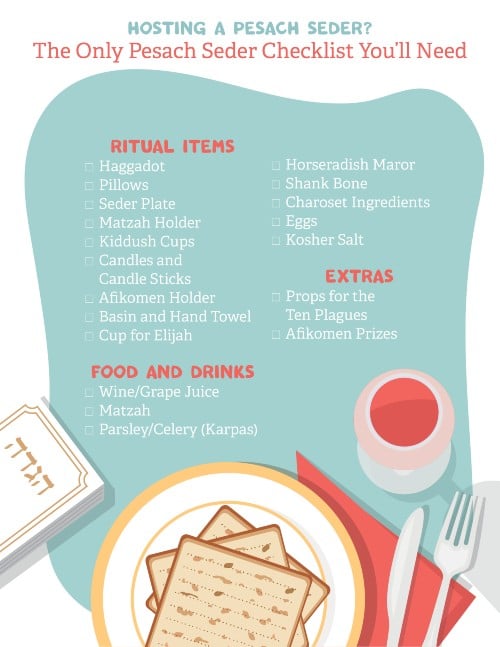By: Mussy Raitman, Lubicom Staff
How many times have you had to make a second trip to the grocery store for an item you forgot to buy? Now is it just me, or times that by ten before Passover?
When it comes to Passover, there is so much going on. From cleaning to cooking, it makes sense that come the first night of Passover, and you could very well forget to prepare a vital part of the Seder.
Now, given the current situation we’re all in, making multiple trips back and forth to the grocery store isn’t something we’ll be too keen on doing.
But, we’re all human, and that’s why I created this checklist for you.
Read it two days before, or even on the day of, just make sure there is no last-minute panic.

Ritual items:
- Haggadot – Every participant at the table will need a Passover Haggadah to use during the Seder. Most Haggadot include well-articulated explanations and gorgeous illustrations. Using different Haggadot will allow guests to share different insights.
- Pillows – Many families have the tradition of placing pillows on each chair to symbolize the comfort of freedom. It’s traditional to recline on a pillow when one drinks the four cups of wine and eats the matzo.
- Seder Plate – The Seder plate is the most vital part of Seder night. Each of the six unique items is arranged on the plate, symbolizing a different facet of the story of Exodus.
- Matzo Holder – Three pieces of matzo are placed underneath the Seder plate. The middle matzo is broken during the Seder and used for the Afikomen (dessert).
- Kiddush Cups – Each guest should have their own Kiddush cup for the four cups of wine. The four cups of wine primarily represent the four expressions of redemption.
- Candles – The blessing over the festival candles is recited with a special blessing for Passover. On the first night, women recite the shehecheyanu bracha on the candles, while the men recite it while making the blessing for the first cup of wine.
- Afikomen Bag – Purchase a bag specially designed to hold the Afikomen. A quick and inexpensive way to hide the Afikomen is to wrap it in a paper or cloth napkin.
- Basin and Hand Towel – Having these supplies on hand helps the ritual hand washing step proceed smoothly.
- Cup for Elijah – The fifth ceremonial cup of wine is poured during the Seder. Although we fill the cup, it is left untouched in honor of Elijah, who according to tradition, will herald in the messianic era.

Food and drinks:
- Matzo – Unleavened bread was one of the foods the Jews in Egypt were commanded to eat. Matzo is specially baked for Passover and used at the Seder as well as the week of Passover. Some families have the tradition of using shemurah matzo.
- Wine/grape juice – Throughout the Seder we drink wine as part of the ritual. It is considered a mitzvah to drink four cups of wine.
- Parsley/celery (Karpas) – For karpas there are many vegetables that are traditionally used, some examples include parsley, celery, and boiled potato. Karpas symbolizes the astonishing bounty of vegetables and fruits in the springtime harvest. It also aims to represent the era of Jewish prosperity before the period of slavery took place.
- Horseradish/Maror – The Hebrew word for horseradish, maror, comes from the root ‘mar,’ meaning bitter. We display a raw horseradish root for the Seder plate and grind some for dipping purposes.
- Shank Bone – Today, we no longer forfeit animals in Jewish worship. Instead, we have the custom of placing a roasted bone on the Seder plate to remind us of the Pascal lamb.
- Charoset Ingredients – The main ingredients for charoset include: apples, nuts, raisins, and red wine. The charoset is used to balance the bitterness of the maror (horseradish). Charoset helps us to remember the mortar that the Jews were forced to use when enduring the back-breaking labor, for the Egyptians.
- Eggs – We use a hard-boiled egg to symbolize the hagigah sacrifice, which would be offered on every holiday (including Passover) when the Temple stood. Additionally, the roundness of the egg also represents the cycle of life; we are encouraged to remember that even in the most agonizing times, we should constantly be positive.
- Kosher Salt – Kosher salt is used to make salt water for dipping. This symbolizes the tears of the Jews throughout their slavery.
Hope this helps with that overwhelming feeling of hosting a Passover Seder!






